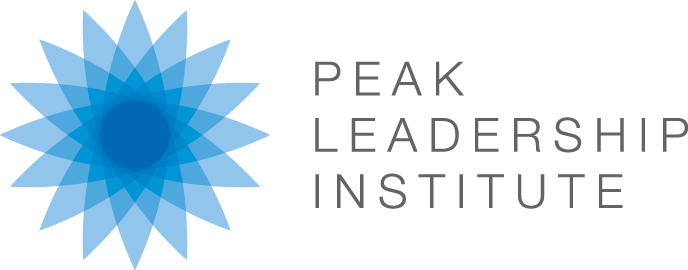Set bigger targets, drive harder toward them, and expect more from the team.
It usually works—up to a point.
But as teams scale the expectation of constant acceleration starts to strain the system. You might recognize these common symptoms: missed handoffs, missed deadlines, half-finished initiatives. The last thing you and your team want is to normalize this, so a common instinct is to go back to what worked not long ago: pushing harder.
A Shift in Focus: High Performance Follows from Strategic Subtraction
The solution isn’t pushing more or pushing less, but shifting from pushing to prioritizing.
The most effective cultures aren’t defined by how much they can extract. They’re defined by how intentionally they manage their most valuable asset: their attention.
Here are three strategies that help high-performing teams stay sharp, solve real problems, and avoid burning out.
1. Ask Hard Questions (Deemphasize Answers)
Performance rarely falters because the team isn’t trying as hard as they can, or as hard as they used to. It stalls when there are too many “high priority” problems to solve, and not enough attention to solve them all quickly and effectively.
One counterintuitive way to help teams prioritize – and one that they will almost certainly resist because there’s “no time!” – is to ask questions that don’t have easy answers.
Why? Easy answers maintain a culture of stalled performance by suggesting that all that’s needed is more action and execution.
Try opening your next strategy session with one well-placed, open-ended question:
- “What’s the most important friction point in our customer experience that we’ve been working around instead of through?”
- “What’s the biggest assumption in our process we haven’t tested lately?”
Then hold the silence, embrace the ensuing tension, and help your team resist the urge to arrive at an immediate answer. Powerful questions reveal tradeoffs. Revealing and managing those tradeoffs is the key to breaking the ceiling of your team’s true performance.
2. Focus on Challenges Over Goals (Deemphasize Targets)
Goals are easy to over-prioritize. They’re crisp, measurable, and energizing. Did somebody hit a bullseye? Yes! Cause for celebration! Everyone gets a dopamine hit. Perhaps someone deserves a bonus?
But goals can also bypass the messy middle—the part where your team performs or flops. High-performing teams wrestle with challenges on the way to their goals, more than they emphasize the goals themselves.
A revenue target is a goal. A customer retention bottleneck is a challenge. The first gives you a number. The second forces you to dig into why the number isn’t moving.
If you want to hit more of your targets, try these strategies to deemphasize the targets themselves and help your team more effectively identify and work with their challenges:
- Ask your team to anticipate challenges early on, e.g. “What are some of the biggest hurdles we’re likely to face in this new project?”
- Provide opportunities for team members to come to you 1 on 1 with concerns and potential solutions, instead of relying on them to be comfortable expressing themselves in a group.
- Take the time to debrief as a team after a challenging project. Invite less tenured team members into the conversation to hear a variety of perspectives.
- Publicly celebrate team members who contributed to a breakthrough in a sticky problem.
- Distribute bonuses rather than deliver them to a single team member.
3. Search for Sacrifice (Take Something Away to Add Something New)
In high-growth companies teams accumulate both depth and breadth of work unsustainably. Here are three examples:
- Successful new initiatives evolve into ongoing project ownership with new performance metrics tacked onto old ones.
- There are new team members to train up and new bosses to please.
- More problems, more goals and more meetings require more feedback, more critical thinking, and more hours at work.
Everyone knows capacity isn’t infinite, but nobody wants to be the first to call out a shortage of capacity. Leaders of high performing cultures are the first to look for and call out dwindling capacity, not the last. They recognize that after a certain point, to add something new means to sacrifice something old.
Try asking:
- “Where could we free up time and attention to focus on what’s next?”
- “What are we willing to stop doing to make this possible?”
- “If you could wave a magic wand and stop doing one thing on a weekly basis, what would it be and why?”
Effective leaders search for sacrifice because they see sacrifice not just as the elimination of something desirable, but as the necessary fuel for change, without which there is no growth.
When More Stops Being More, Try Less
Every founder wants a high-performing culture. But the addictive intensity of pushing, achieving, and accumulating often leads to extraction, not excellence. You run the risk of leaving your team with a house of cards, rather than a stable foundation for future growth.
Leaders can build high performing teams through three types of strategic subtraction:
- Ask hard questions to surface and manage tradeoffs (deemphasize answers)
- Focus on challenges over goals (deemphasize targets)
- Identify worthwhile sacrifices to fuel future growth (take something away to add something new)
When you strategically subtract, you help your team reach their true capacity by surfacing and navigating tradeoffs. This approach is counterintuitive to the drive for constant growth but is ultimately the key to unlocking genuine, long-term success.


